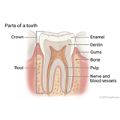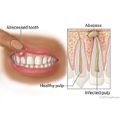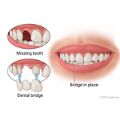tooth decay
condition basics
what is tooth decay?
tooth decay is damage that occurs when germs (bacteria) in your mouth make acids that eat away at a tooth. it can lead to a hole in the tooth, called a cavity. if not treated, tooth decay can cause pain, infection, and tooth loss.
a tooth has three layers.
- the hard outer layer is called enamel.
- the middle layer is called dentin.
- the centre of the tooth is called the pulp. it contains nerves and blood vessels.
the more layers that are affected by decay, the worse the damage.
what causes it?
bacteria and food can cause tooth decay. a clear, sticky substance called plaque is always forming on your teeth and gums. plaque contains bacteria that feed on the sugars in the food you eat.
as the bacteria feed, they make acids. the acids attack the teeth for 20 minutes or more after you eat. over time, these acids destroy tooth enamel, causing tooth decay.
things that make you more likely to have tooth decay include:
- not brushing and flossing your teeth regularly and not seeing a dentist for checkups and cleanings.
- eating foods that are high in sugar and other carbohydrates, which feed the bacteria in your mouth.
- not getting enough fluoride. fluoride helps prevent tooth decay by making teeth more resistant to acids produced by plaque. fluoride is added to many public water supplies.
- not having enough saliva. saliva washes away food and harmful sugars, so it helps protect your teeth from decay. a dry mouth may be caused by a condition such as xerostomia or sjögren's syndrome, by taking certain medicines, or by breathing through your mouth. older adults are more likely to have a dry mouth.
- having diabetes.
- smoking, using spit (smokeless) tobacco, or breathing second-hand smoke.
children, whose teeth are still growing, are more likely than adults to have tooth decay. this is because the minerals in new teeth are not very strong and are easier for acids to eat away.
even babies can be at risk for tooth decay. babies who are put to bed with a bottle can get "bottle mouth"—tooth decay caused by the sugar in milk, formula, or juice. babies aren't born with decay-causing bacteria in their mouths. but they can get bacteria from adults who share spoons, forks, or other utensils with them.
what are the symptoms?
tooth decay usually doesn't cause symptoms until you have a cavity or an infected tooth. when this happens, you may have:
- a toothache, which is the most common symptom.
- swelling in your gums near a sore tooth. this can be a sign of severe tooth decay or an abscessed tooth.
- bad breath or a bad taste in your mouth.
- white, grey, brown, or black spots on your teeth.
if you have a toothache, see a dentist. sometimes the pain will go away for a while, but the tooth decay will keep growing. if you don't get treatment, your cavities could get worse and your tooth could die.
how is it diagnosed?
to diagnose tooth decay, your dentist will:
- ask questions about your past dental and medical problems and care.
- check your teeth, using a pointed tool and a small mirror.
- take x-rays of your teeth and mouth to find tooth decay that can't be seen with the eyes alone.
how is tooth decay treated?
the best treatment for tooth decay depends on how severe it is. if tooth decay is caught early, before a cavity forms, you may be able to stop it by brushing with fluoride toothpaste or getting fluoride treatments. that's one good reason to see your dentist on a regular basis.
if the decay has eaten through the enamel, you may need one or more treatments, such as:
- a filling if a cavity has formed. after the decay is removed, the dentist uses a material to fill the hole and restore the tooth to its original shape.
- a crown if the decay is severe and your tooth is badly damaged. a crown, or cap, is a man-made replacement for part of a tooth.
- a root canal if the pulp of your tooth is infected. a root canal removes the diseased pulp of a tooth.
- removal (extraction) if the root of the tooth is severely damaged. the dentist may replace the tooth with a bridge or an implant.
if you have pain and swelling, you can take steps at home to relieve it.
- use ice or cold packs on the outside of your cheek for 10 to 15 minutes at a time, several times a day. always put a thin cloth between the ice and your skin. don't use heat.
- take an over-the-counter pain reliever such as acetaminophen or ibuprofen. be safe with medicines. read and follow all instructions on the label.
how can you prevent it?
you can prevent most tooth decay with these tips:
- take good care of your teeth. brush your teeth twice a day, in the morning and before bedtime. use fluoride toothpaste. floss once a day.
- see your dentist for checkups once or twice a year so problems can be found before they're serious.
- don't snack before bedtime. food left on the teeth overnight is more likely to cause cavities.
- avoid foods that have a lot of sugar, especially sugar-coated cereals, desserts, and sticky foods like taffy and raisins. the longer sugar is in contact with your teeth, the more damage it will do.
if you have children, get them regular dental checkups, and take steps early to prevent tooth decay.
- to help prevent baby bottle tooth decay, don't put your baby to bed with a bottle of milk, formula, or juice.
- to help prevent the spread of decay-causing bacteria, don't feed your baby from utensils you have used.
- teach your children to brush their teeth in the morning and at night.
- keep your children away from tobacco smoke.
- ask your dentist about:
- fluoride supplements if your water doesn't have enough fluoride.
- sealants to help protect your child's teeth from decay.
credits
current as of: august 6, 2023
author: healthwise staff
clinical review board
all healthwise education is reviewed by a team that includes physicians, nurses, advanced practitioners, registered dieticians, and other healthcare professionals.
current as of: august 6, 2023
author: healthwise staff
clinical review board
all healthwise education is reviewed by a team that includes physicians, nurses, advanced practitioners, registered dieticians, and other healthcare professionals.




